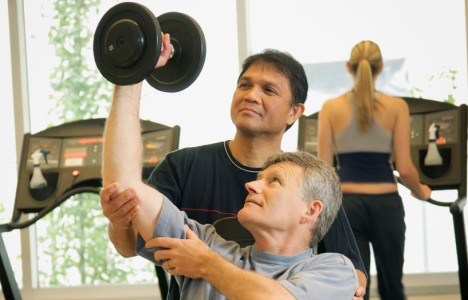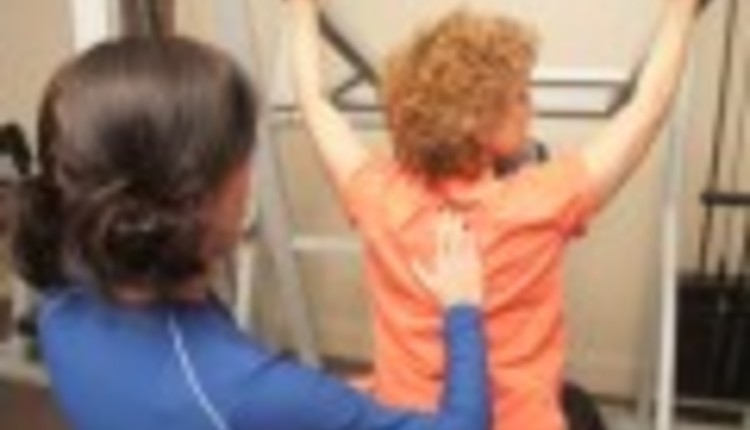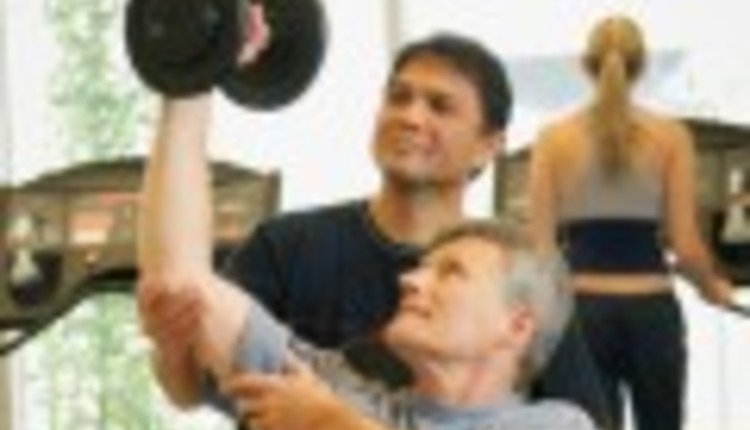
Editor's Note: "The Boomers" is asix-part series on how you can make the baby boomer market successful withinyour fitness business. Part three, "Boost Their Strength" takes a look at the different strength-training needs of this age group.
For more of thisseries and other articles about this population, see "Related Resources" below.
Myhusband, a geriatrician (a physician who specializes in older adults) is the medicaldirector for nursing home communities. This association has provided me withexperiences in an area that I am sure would otherwise have gone unvisited. Thesingle most important lesson I have learned is most people end up in thenursing home not because they are sick, but because they are WEAK. Thisintrigues me because, in most cases, this lack of strength is something that couldbe avoided, or even corrected, if effective strength training was betterunderstood.
Onceadults pass the physical prime of their teens and 20s, they lose an average of10 ounces of lean body mass a year. This is mostly in the form of muscletissue. Few people actually lose 10 ounces of weight per year.Instead, most gain abouta pound per year, so the loss of lean tissue is masked.Another way to look at this is that the average person gains about one poundand 10 ounces of body fatper year. It is a process that is more insidious and crippling thanosteoporosis but one few people notice until they realize it is gettingdifficult to climb the stairs or heft themselves off the sofa. This gradualloss of muscle strength is the main reason aging adults eventually havedifficulty performing the tasks of daily living and ultimately lose theirindependence. This phenomenon, called sarcopenia, is derived from Greek wordsfor "vanishing flesh," and is NOT an inevitable consequence of aging but disuse.
GaryReinl, an expert consultant for the long term care industry and creator of aprogram called FreedomThrough Functionality, says what goes on inmost nursing homes enrages him because strength training is mostly nonexistent.He feels it should be a CRIME (with legal penalties!) for a facility not toprovide every resident access to a safe and effective strength-trainingprogram. As a fitness professional, considering what is known about thebenefits of strength training, can you argue otherwise? I can't. So, that got me thinking, as fitness professionals,isn't it criminal if we too are not providing all of our clients with a trulysafe and effective strength-training program?
Mostof us have a good understanding of what is needed to successfully train theaverage middle age and younger adult, but fewer trainers understand thespecifics of safe and effective strength training for the Baby Boomer andbeyond client (ages 47-64+). Although the guidelines for older adults andadults with chronic conditions are similar to those for younger adults, thereare key differences and points to consider.
Whenworking with a deconditioned client, a primary goal is to build a solid base ofstrength. And, the most dramatic initial improvements in strength are realizedwhen you use training methods that do not require great input from corestabilization muscles, such as supported exercises with selectorized equipment.
Whyis this true? When the body calls on these stabilizing muscles, the targeted muscle, or muscle group, isworked at roughly 60 percent of its capacity. So you should initially beginwith selectorized equipment, if available. The next best option would be usingbands, dumbbells or barbells and a seated (supported) position on a stablesurface such as a weight bench. Unsupported exercises utilizing bands, balanceballs, and dumbbells should be reserved for more advanced programs or incircumstances where other equipment is not readily available.
Increasinglower body strength is the single most modifiable risk factor for fall preventionbecause of the resulting improvement in balance.
Thereis a lot of overlap between strength and balance exercises. As a matter offact, one exercise often serves both purposes. Increasing strength in the lowerbody will indirectly and simultaneously improve balance as well. In addition,any lower-body strength exercise performed while standing can directly improvebalance at the same time. This is true for unsupported strength exercises ingeneral. So, unsupported exercises should definitely be part of your trainingfor mature adults followingthe initial focus on building a base of strength through supportedexercise. (This is a good approach to maintain balance for the aging BabyBoomer who might otherwise be unreceptive to a "balance training program" theymight identify as appropriate for someone much older.)
Twoequally important factors facilitate the strength building process. The firstis progressive resistance exercise to stress the muscles and stimulatephysiological adaptation. I often see programs for older adults listed as "mild" or "light.' While the program might seem mild or light to you, what isimportant is that it challenges your client and fatigues the muscles beingworked. If the program does not fatigue the muscles and is not progressive, itwill not be successful.
Thesecond factor is sufficient recovery time to permit tissue repair, building andprotein overcompensation, leading to larger and stronger muscles. If musclesare not given enough time to rest, clients may develop overuse injuries and/ormuscles may breakdown rather than build up. Strength training expert WayneWestcott recommends that older adults allow 72 to 96 hours for recovery beforeexercising the same muscle group again. This is considerably different than the48-hour guideline that is typically quoted as the industry standard.
Hereare minimum guidelines for mature adults who are beginning a strength-trainingprogram:
- One exercise for each major muscle group
- Exercise twice per week
- One set of 8-12 repetitions (six seconds per rep). Frailer adults, 15 reps per set
- Increase weight load 1-3 lbs. upon completing 12 repetitions with proper form (15 for frail)
The minimum recommendations are just that: the minimum needed to maintain healthand see fitness benefits. If a person can exceed the minimum, he or she canfurther improve personal fitness, improve management of an existing disease orcondition and reduce risk for health conditions and mortality. Increasing thenumber of sets and including more exercises and other advanced training optionsshould be the goal after an introductory program for a mature client new tostrength training.
Mature adults: if you UNDERSTAND them you can successfully TRAIN them. And if you dosuccessfully train them, you will RETAIN them.
Tammy Petersen is the founder and managing partner for the American Academy of Health and Fitness (www.aahf.info). She has written two books on older adult fitness and designs continuing education programs focusing on older adults (SrFit) and youth fitness (JrFit). For more information on these programs, please visit our online Shop.














